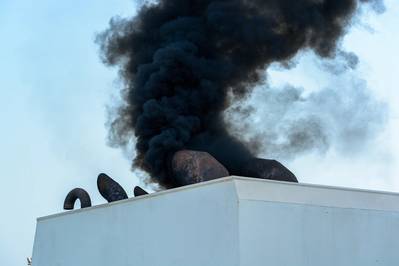Valmet, VTT Tests System to Dramatically Cut Ship Exhaust Gas Emissions
Valmet reports that it has tested a first-of-a-kind scrubber and wet electrostatic precipitator combination and cut exhaust gas emissions in a marine diesel engine by up to 99%. The solution potentially could allow shipping companies to lower their particle matter and black carbon emission levels, while benefitting the environment and helping to meet tightening emission regulations.
The pilot testing and configuration project was carried out together with VTT Technical Research Centre of Finland Ltd (VTT).
Up to date, International Maritime Organization’s (IMO) regulations on air pollution have addressed mainly SOx and NOx emissions but the awareness of particle matter and black carbon emissions is growing due to their negative impact on global warming and human health. Whereas SOx scrubbers can reduce particulate matter and black carbon emissions with limited efficiency, Valmet contends that a combination of a wet scrubber and a wet electrostatic precipitator could capture these emissions almost completely from a ship’s exhaust gas.
“At VTT, we had already studied the emissions of ships that have a marine scrubber installed. This way we had experience of the challenging measurement conditions related to scrubbers and also comparable data on the emission reduction potential of the new setup,” said VTT’s Senior Scientist Kati Lehtoranta.
Additionally, VTT had a medium-speed diesel engine that runs on heavy fuel oil, the equipment for demanding pilot tests, top experts and the scientific know-how to publish the test results.
“The solution we tested brings so many benefits that we believe it has great potential. Emission regulations are bound to tighten in the upcoming years. Valmet now has a solution that can be installed both on newbuilds and already operating vessels that still use conventional fuels. That enables shipping companies to significantly reduce particle emissions, while continuing their operation normally,” said Juha Jokiluoma, Product Manager at Valmet.
Valmet Wet Electrostatic Precipitator – WESP, Wet ESP – is used to control emissions, including particulate emissions, heavy metals, acid mist, oil mist and visible plume. Its operation is based on a strong electrical field between discharge electrodes and collecting tubes created by a transformer rectifier. Valmet WESP can be integrated to Valmet DNA’s user interface or other distributed control systems as well as utilize new Valmet Industrial Internet (VII) features.
















